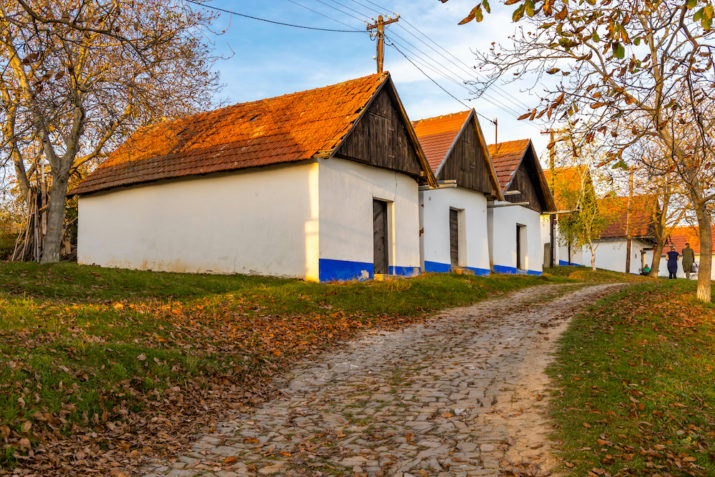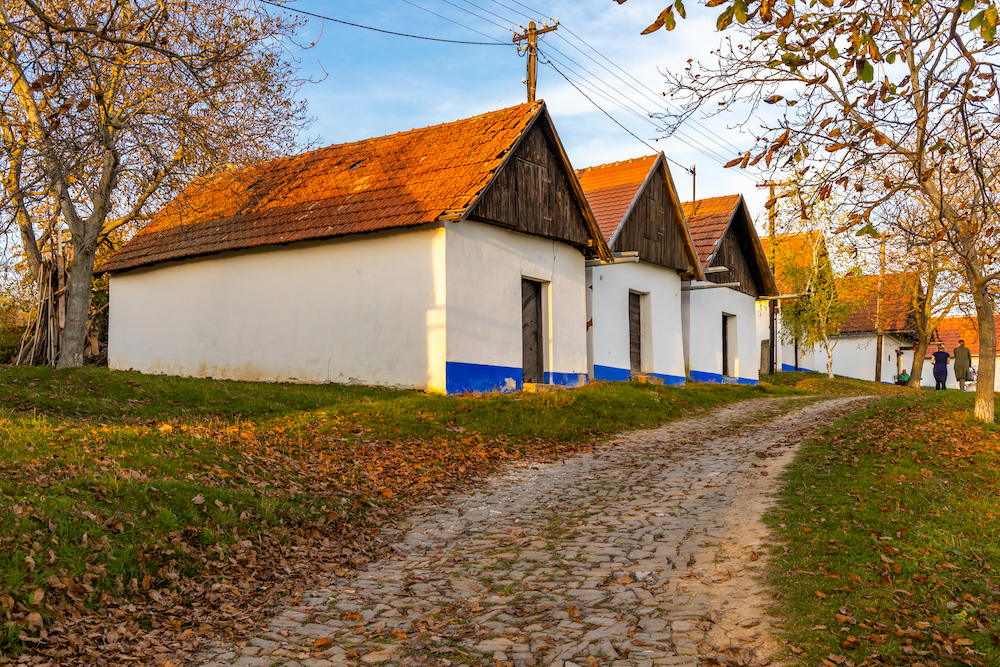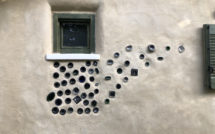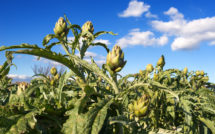

This is part of our special feature on Rurality in Europe, and a roundtable, Changing Agriculture in Rural Europe.
Nestled in the southeast corner of Czechia, South Moravia is located on the western tip of the Carpathian Mountains and at the foot of the Danube river. For the last thirty years, winemakers in this picturesque region have committed themselves to a massive undertaking: to reinvent their country’s wine industry. The politics of the twentieth century ravaged the Czech wine market—one that had proved prosperous in earlier centuries. Waves of devastation caused by World Wars I and II, Soviet occupation, and subsequent government control by the Czech Communist Party prevented any form of modern, commercial winemaking or independent vineyard ownership as we know it today. This left semi-permanent scars on the communities and vineyards of South Moravia, that have recently begun to heal, giving way to a blossoming and competitive wine market.
It is only since the Velvet Revolution of 1989 that this region’s wine industry has been able to evolve from a state-owned and operated industry into its modern-day enterprise. Today, Czechia—formerly known as the Czech Republic, and Czechoslovakia before that—is part of the European Union, recognized as a democracy and free market with private, independent ownership of wineries, cellars, and vineyards. Thanks in part to governmental and foreign financial subsidies, this industry is now brimming with innovation and education. Moravian winemakers are experimenting with drastic overhauls of their wineries and vineyards, challenging the status quo in terms of grape varieties planted, and pushing the boundaries of traditional winemaking. They are earning accolades in international wine competitions in both Europe and North America, which they had earlier been forbidden to even enter.
Looking to compete on a larger scale in international markets, Czechia is now promoting South Moravia’s wine region to an entirely new level. After 1990, this dynamic revolution has been propelled by the winemakers’ freedom to communicate and travel outside of the Soviet bloc to consult with university-based viticulturalists, marketing professionals, and foreign producers in neighboring European countries. According to Master of Wine Liz Thatch, “After emerging from forty years of Soviet rule, where many of their ancient vineyards were torn out to grow wheat and corn, there is a spirit of fierce independence and entrepreneurship among young winemakers who want the freedom to experiment and not be tied to a signature wine product.”[1] Scholars of new markets well-recognize the need for ventures within an emergent industry to coordinate strategically in navigating their social, cultural, and political environments.[2]And indeed, today, winemakers in South Moravia are proving that they are unconstrained by the gravity of their past, and are instead forging ahead to develop their own Moravian identity in their wines, aiming for European and global recognition.
The geography of the South Moravian wine region
South Moravia, approximately a three-hour drive from Prague, is centered by Czechia’s second largest city, Brno, its administrative and commercial center since the twelfth century. Currently, there are over 19,000 hectares of land in South Moravia under vine and 850 registered wineries, making up 96 percent of Czechia’s total production.[3] The wineries range in size from small family operations cultivating less than two hectares, to larger scale wineries that farm over 300 hectares, while managing multiple brands and comprehensive export operations. Similar to the prestigious wine producing regions of Champagne, Alsace, and Mosel, South Moravia lies at the 49th parallel, considered by international wine experts to be ideal for grape cultivation. The region’s landscape is strikingly similar to the admired winegrowing region of Niederösterreich, in southern Austria, in terms of terroir, climate, and soil composition.
Considered a continental “cool” climate, South Moravia is most suitable for producing aromatic white grape varieties, like Sauvignon Blanc and Riesling, and lighter red grape cultivars, like Frankovka (Blaufränkisch) and Svatovavřinecké (Saint Laurent). Overall, the National Czech Wine Register records over fifty permitted grape cultivars, incorporating both local and hybrid varieties in their vineyards.[4] Currently, sparkling, dry, semi-sweet, late harvest, and fortified wines are all produced, leading to a fascinating and enviable array of styles and quality levels. South Moravia further contains four distinct subregions, each with a particular microclimate and soil composition. For Mike Mazey, a renowned Australian winemaker and winery consultant who has lived and worked in Brno for the last fifteen years, the extra elevation and limestone soils of the Pálava Hills in Mikulov offer something particularly special to wines from the region, by creating “a distinct difference between the vineyards planted on those southern slopes compared with the vineyards planted on the plains. There is a quality difference, with some of the finest wines of today coming from the Mikulov subregion.”
History of South Moravian winemaking and German roots
Wine has been produced in South Moravia since at least the twelfth century, though some wine historians theorize even earlier, back to the Romans in the third century.[5] For centuries, simple table wine (stolní víno) was destined for regional, village consumption, with little attention paid to modernizing the industry or to a focus on quality wine (jakostní víno). In the nineteenth century, Brno was part of the Austro-Hungarian Empire, the constitutional monarchy that ruled across Central and Eastern Europe from 1867 to 1918. Although the area that would become Czechoslovakia was not yet a sovereign nation, it benefited from shipping its wines using the Empire’s railroads. Winemaking, although not tremendously profitable, did offer citizens a fairly prosperous livelihood.
Prior to World War II, the South Moravia region, in particular Mikulov and Znojmo, was largely inhabited by Germans, who paved the way for modern day viticulture and vinification practices there, including Lenz Moser’s Hochkultur system of vine training, which moved grape clusters higher off the ground and made them less subject to bouts of late autumn and early spring frost. German was the common spoken language in schools, and “Brünnerisch,” a mixed dialect of German and Czech, became the popular spoken dialect. As a result of the growing German population in the region, the late nineteenth century saw a peaked interest in vineyard management training and academic institutions, eventually leading to the establishment of several viticultural schools and programs in Mělnik, Valtice, Lednice, Mikulov, and Bzenec. Vineyard plantings and production saw a marked decline in the period immediately leading up to World War I due in part to the vine louse phylloxera arriving and spreading in Moravia (after ravaging vineyards across Western Europe) and, in part, to the Empire’s break-up of landed estates and abolition of customs in Hungary and Austria. During this period, Moravian winemakers worked primarily as collective groups, able to support each other and their economic livelihoods through partnerships.[6]
One of the many tragic consequences of World War II was the expulsion of German Jews, who had inhabited Mikulov for at least decades.[7] After World War II, the Third Republic government forced ethnic Germans and any remaining German speaking Jewish citizen out of the country. Communities were destroyed and Mikulov became a town under heavy neglect and disrepair.
It was a grey, sad town with many derelict houses, some of which were to be demolished, particularly in the Jewish quarter. There were only a few bright spots – the romantic Jewish cemetery, the Holy Hill with the Diestrichstein Tomb below, and the château complex. Apart from that, it was a very sad town.[8]
What had once been the center of commerce for wine slowly transformed into a ghost town and, over the next few years, the Soviet occupation grew their stronghold in the region, pervading cultural life, discouraging agriculture as a respected livelihood, and eliminating private land and business ownership.
Vineyards behind the Iron Curtain
The years of communist control after World War II could have easily shattered then-Czechoslovakia’s entire wine industry. The overall percentage of agricultural land in the country declined during this period.[9] Use rights for vineyards, like other agricultural lands, were confiscated and nationalized by the government that took power in 1948, and historic field boundaries were eliminated. State farms held about 28 percent of agricultural land and 68 percent was positioned in collectives,[10] some members of which (mainly those who ingratiated themselves with the state[11]) were re-allocated tiny subsections of land. Borders with neighboring countries were closed and cross-border wine trading was practically eliminated. Individual winemakers were restricted to produce only enough wine for their personal consumption. As landowners were forced to give up their land and their livelihoods, the economic importance of wine ultimately declined in the region as well.
Radomír Nepraš, of Břeclav, and his wife, Ludmila Veselý Nepraš, of Brno, are the current owners of the winery Nepraš Vinařství and well-regarded founders of the National Wine Salon (Národní vinařské centrum), an educational and research-based wine center, focusing on regional wine competitions, public tastings and education programs, and sommelier training in the town of Valtice.[12] Having lived through the long decades of struggle under a communist government, they relayed in an interview how vineyards under communism suffered and that they are thankful to now be private business owners, selling quality wine produced on their own land.
Prior to the Soviet occupation, Radomír’s father owned a textile shop in Břeclav. After 1948, the shop quickly became the property of the state. As he told the first author in an interview:
My father, once the owner of the shop, became a simple worker. He lost all ownership rights and our family was forced to move from our home to a three-room family flat. If we made a fuss, my father was threatened with political persecution, so we went along with it. I decided to make wine as a hobby as I got older, but it remained only a hobby until after the Velvet Revolution. I could not sell wine as an independent, private winery.
Ludmila explained that political surveillance and persecution saw few limits, adding:
Whoever did not agree, the anti-communists, were attacked or victimized. My father was a student in the demonstrations prior to the installment of the Communist Party, and after they took control, my father was forced to work three years in the coal mines as punishment for demonstrating against the party, being separated from us and my mother.
Later in the interview, she remarked about effects on daily life:
Communism affected everything. Nothing was private. Individual property ownership was considered “stolen,” as everything belonged to the State. You could not be a farmer, there were no winemakers as we know them today. The state owned everything, and our gods became Lenin and Stalin.
Such consequences of demonstrating against the state created fear and panic among families, and the control over their finances, businesses, and property ownership was all encompassing. As a case in point, in an interview with another winemaker, Marek Špalek, the co-owner of Špalek Vinařství in Nový Šaldorf, a village located in the subregion of Znojmo, he explained that before communism, his family owned two cellars and produced wine annually. After 1948, the cellars and land were stripped from their control, and they were subsequently allocated only 0.1 hectare of land to farm for their own use with restricted finances and outdated technology.
The first signs of vineyard expansion came during the 1960s and 1970s and the total area under vine rose gradually from 7000 hectares in the 1950s to 14,019 hectares by 1980.[13] However, according to winemakers today, incentives for production quality declined with collectivism. Existing vines were replanted with “high vigor” varietals that would ripen faster, promised bumper harvests, and that could be machine harvested, facilitating the mass production of quaffable, bulk wine.[14] Cultivars such as Müller Thurgau, Grüner Veltliner, and Welschriesling quickly rose to prominence as easy blending components for mass, bulk wine production. As a dramatic result of this rapid change in ownership rights, the efficiency and quantity of wine produced became more valued than its quality or varietal typicity. Yet despite these adversities, farmers kept growing grapes and producers kept making wine, albeit without formal distribution or sales channels. In fact, while it was formally illegal to have a wine-making and selling business, it was also frequently tolerated by authorities that people might sell off part of what they produced via the informal economy.[15]
Although the Soviet leaders had attempted to destroy public records of land and business ownership titles during their rule, they were ultimately unsuccessful, and in 1989, remaining records were eventually released. It was only at this point that families like Marek Špalek’s could regain their once-confiscated land and begin to rebuild their businesses. In 1990, thanks to rediscovery of ownership records by the local village registrar, the Špalek family was redistributed twelve hectares of land, and since 1997, has been producing high quality wine under its own name. Its wines are sold both within the country and abroad, and the winery is currently transitioning to biodynamic production.
This is but one example of land loss and restitution for a family who overcame the stunting of its industry by the control of the Communist party to craft exceptional wines. During the 1990s, national restitution procedures de-collectivized state operated farms, returning small, patchwork parcels of land to individual families and their progeny.[16] Others–just how many we do not know, as records seem to be lost, hidden, or destroyed–had already moved on, abandoning their vineyards and winemaking facilities. In the years following the Velvet Revolution, as other countries in the West continued to invest in, develop, and implement the latest vinification and cellar technologies in their respective national markets, South Moravian wineries–like others in the transition countries of Eastern Europe–struggled to keep up. The years under communist rule proved to be detrimental to wineries in terms of keeping up with European production practices and trends, as well as to the deteriorating quality of their vines. In today’s current political and social environment, steps towards organic and biodynamic winemaking are well underway in the region, aided by financial investments, notably from the European Union, and foreign consultants in both the vineyard and the cellar.
Revamping the industry in the twenty-first century
Until the Czech Republic joined the European Union on May 1, 2004, Moravian winemakers mostly lacked the broad foreign investments and modern technologies that had benefited neighboring wine producing countries, like Austria and Hungary. That year, their industry was valued at 928 million dollars, or 0.9 percent of the total European wine market’s value.[17] Moravian winemakers needed to adapt to the standards and directives of the European Union, including the EU’s incentivized “vine pull scheme,” designed to prevent excessive surpluses and “drain the European wine lake.”[18]After that, broader financial assistance―supported by the establishment in the Czech Republic of the Wine Fund, through the Act on Viticulture in 2002―was redirected to restructuring vineyards (integrating grape production); the reproduction and propagation of new vines, modeled after similar practices in Germany and Austria; as well as improving cellar management techniques.[19] According to the Vinařský Fond (Winemakers Foundation), the main activity of this model, “was to support the planting of vineyards. Since 2004, the Fund has been supporting wine marketing, wine tourism development and informing the public about viticulture.”[20] At the time, management scholar Pavel Zufan suggested that, given key trends in the industry, the 2002 Wine Act would become a shared, standardized resource and “a basic source for categorization of particular wines and their series” in the developing field of Czech viticulture.[21]
In addition to the Wine Fund, Brno’s Mendel University has offered Viticulture Masters and PhD Programs since 2003, educating winemakers in the replanting of vineyards, experimenting with modern, state of the art equipment. Prior to 2003, Vilém Kraus, who was head of the Wine Institute from 1964 until his death in 2013, had focused a good portion of Mendel University’s horticulture program on vines and wine, setting the stage for expanding the offerings of university-based viticulture degree programs and partnerships with the industry.[22] This has helped new South Moravian winemakers cultivate their social networks and overcome collective constraints in pushing the industry forward onto a larger stage.
Today, thirty years after the Velvet Revolution and despite the global COVID-19 pandemic, South Moravian winemakers are determined to establish Czechia’s viability and worldwide reputation as a wine producing nation and are receiving significant investments to advance their quality production and reshape an industry that had long been neglected. Moravian producers are now able to craft high quality wines that instill a sense of terroir, or “taste of place,”[23] by utilizing advanced viticultural techniques that have resulted in drastic improvements to both quality and ageability. This itself is new. When Australian winemaker and consultant Mike Mazey arrived in Brno in 2004, he was stunned by what he saw. “It was quite a surprise to me,” he said in an interview, “that a winery would be without stainless steel tanks and without the ability to control the temperature of the fermentations in those tanks. Previously, they had sixty-year-old tanks in the winery, that I believe were a food grade plastic, and to be honest, were not as sanitary as I would have liked as a winemaker.” Since then, he has spent the past fifteen years working with Moravian wineries to improve the quality of their wines, their hardware and technological practices, and their cellar hygiene standards.
During this time, hundreds of new independent wineries have been founded, the majority of which are small, family businesses. The larger wineries that have been established are “from shrewd investments by business-savvy Czech professionals.”[24] The tremendous impact of the free market democratic system of private land ownership has revitalized this wine industry, allowing for the implementation of organic and biodynamic viticultural practices and supporting consumer-driven markets. Winemaking is no longer determined by the collective state, but rather by the individual perspective, decisions, and passion of the winemaker.
Looking forward
The past thirty years have been revolutionary for the South Moravian wine industry. Strategically placed vineyard plots, university-based wine-making degrees, and massive financial investments have set the region on a path towards viticultural and commercial success, in both domestic and international markets.[25] As of 2016, almost 18,000 hectares of land are planted with vines, boasting both native and international grape varieties.[26] And, in the last few years, both small family wineries and larger scale commercial operations in the region have been commanding international attention in an ever-expanding global wine market, with winemakers taking home awards and accolades at competitions and wine shows around the world. These include seven gold medals at the 2016 Vinalies competition held annually in Paris, multiple medals at the 2019 Cool Climate Wine Awards, and, most recently, two platinum, four gold, twenty-seven silver, and seventy-nine bronze medals at the 2020 Decanter World Wine Awards.[27] These producers have overcome many obstacles, seen noteworthy accomplishments, and are now on a clear path forward. This is somewhat astounding to consider, given that South Moravia’s commercial winemaking industry is still emerging. Yet, its producers are looking forward, not backward, in seeking to construct the region as an epicenter in the global wine world–understanding that a success for one winemaker is a symbolic victory for all and purposively organizing for what they see as entrée into wine communities around Europe and the world. It is these common goals of market vibrancy, innovation, and mutual support within this regional wine industry that are symbolically negating the fear and distrust of outsiders previously sought by the communist state.
Arielle DeSoucey is an American expat currently living in Brno, Czechia, where she founded Civil Wines (www.civilwines.com) as a way to educate the English-speaking community in Brno about wine, and consults for Bines & Vines, a Canadian importer of Czech wines. She holds a Bachelor’s Degree in French from the University of Mary Washington in Fredericksburg, VA, as well as a WSET Level 2 and Level 3-Advanced Certification.
Michaela DeSoucey (PhD Northwestern University) is an associate professor of sociology at North Carolina State University in Raleigh, North Carolina, US. Related to her research interests in European studies, she is the author of “Gastronationalism: Food Traditions and Authenticity Politics in the European Union” (American Sociological Review, 2010) and the award-winning Contested Tastes: Foie Gras and the Politics of Food (Princeton University Press, 2016).
References:
[1] Thatch, L. (2018). Wines of the Czech Republic: Searching for a Signature Product. Available at: www.winebusiness.com.
[2] Sassatelli, R. and A. Scott. (2001). “Novel Food, New Markets, and Trust Regimes: Responses to the Erosion of Consumers’ Confidence in Austria, Italy and the UK.” European Societies 3(2):213-44.
[3] Wines of Czech Republic (2017). The Czech Republic: A Long Wine-Growing History. Available at: http://www.wineofczech.cz/
[4] Ibid.
[5] https://www.vinazmoravyvinazcech.cz/cs
[6] See: https://www.wineofczechrepublic.cz/en/our-wines/history/development-of-wine-making/historical-development-of-the-proprietal-struture.html
[7] https://encyclopedia.ushmm.org/content/en/article/the-holocaust-in-bohemia-and-moravia
[8] https://english.radio.cz/a-tale-two-towns-and-their-post-communist-transformation-8277832
[9] Czechoslovakia, a Country Study. Library of Congress Area Handbook Series. 1989. Ihor Gawdiak, ed.
[10] http://www.fao.org/3/AD878E/AD878E05.htm
[11] Toresello, Davide. 2003. “Trust and Property in Historical Perspective: Villagers and the Agricultural Cooperative in Kiralyfa, Southern Slovakia.” p. 93 –116 of The Postsocialist Agrarian Question: Property Relations and the Rural Condition, ed. Chris Hann. Münster: Lit Verlag.
[12] All informants named in this essay granted their permission to do so.
[13] Data gathered from wineofczechrepublic.cz.
[14] De Goeij, Hana. “How Czech Wine Got Its Terroir Back.” The New York Times, 16 Aug, 2016, p.A7. Available at: www.nytimes.com/2016/08/16/world/europe/czech-wine-moravia.html.
[15] https://english.radio.cz/a-tale-two-towns-and-their-post-communist-transformation-8277832
[16] According to data gathered by the Food and Agricultural Organization in their 2009 World Census of Agriculture, 90 percent of restitution cases were resolved by 1998. Yet, while 95 percent of agricultural landholdings in the Czech Republic were held by civilians, this comprised just a quarter of all of the country’s agricultural land.
[17] Datamonitor Industry Profile. Wine in the Czech Republic. Ref Code: 0144-0800, published October 2005.
[18] Robinson, J. and J. Harding, eds. 2015. The Oxford Companion to Wine. Oxford University Press.
[19]Tomšík, P., Žufan, P., Sedlo, J. (2006). “Attractiveness of Czech winegrowing and wine-production in the stage of adaptation to the united market of the European Union.” Acta Univ. Agric. et Silvic. Mendel. Brun., LIV, No. 3, p.101–114.
[20] http://vinarskyfond.cz/
[21] Žufan, P. (2004). “Czech wine-production industry and recent movement forces.” Agri. Econ.-Czech, 50, p.400-404.
[22] Interview with Kamil Prokeš, Mendel University Department of Viticulture and Enology.
[23] https://www.europenowjournal.org/2018/09/04/terroir-wine-culture-and-globalization-what-does-terroir-do-to-wine/
[24] “Czech viticulture: Palava creates a stir in winemaking circles.” Financial Times. October 6, 2011. Available: https://www.ft.com/content/92ac01d4-e83e-11e0-9fc7-00144feab49a.
[25] Datamonitor Industry Profile. Wine in the Czech Republic. Ref Code: 0144-0800, published September 2014.
[26] Ministry of Agriculture of the Czech Republic Report. http://eagri.cz/public/web/file/581592/publikace_MZe_210x210mm_ENG.pdf
[27] https://www.decanter.com/wine-news/decanter-world-wine-awards-2020-results-announced-444058/
Photo: Wine cellars in Vlcnov, Southern Moravia, Czech Republic | Shutterstock
Published on November 10, 2020.




